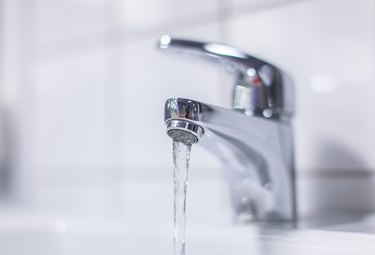Easy Processes to Boost Low Water Pressure in Your Home
Easy Processes to Boost Low Water Pressure in Your Home
Blog Article
The author is making a few great observations on Low Water Pressure in the House? in general in the content which follows.

Low water stress in your home can be an aggravating issue, impacting every little thing from showering to cleaning dishes. If you're experiencing weak water flow, there are several possible reasons and remedies to explore. In this overview, we'll discuss common factors for low tide stress and useful steps to resolve the problem efficiently.
Introduction to Low Tide Stress
Low water stress happens when the flow of water from your faucets, showers, and various other components is weaker than common. This can make daily jobs extra difficult and less effective. Understanding the causes of low water stress is vital to finding the best service.
Common Root Causes Of Low Tide Stress
Pipeline Obstructions
With time, pipelines can come to be obstructed with natural resource, sediment, or particles, limiting the flow of water. This is an usual concern in older homes with galvanized steel pipes.
Deterioration
Corrosion within pipelines can cause leaks and reduced water stress. Rust accumulation can restrict water flow, especially in aging plumbing systems.
Faulty Pressure Regulatory Authorities
Pressure regulators are in charge of maintaining consistent water stress in your house. If they malfunction, it can lead to low tide stress or irregular flow throughout your home.
Metropolitan Water Supply Issues
Occasionally, the trouble exists outside your home. Municipal water problems, such as main line leaks or upkeep job, can momentarily reduce water stress in your location.
How to Diagnose Low Tide Pressure
Checking Faucets and Components
Begin by evaluating the water stress at different taps and components throughout your home. If the problem is separated to details locations, it might show local issues.
Checking Pipes
Inspect noticeable pipes for indicators of leakages, rust, or clogs. Focus on any unusual noises, such as knocking or rattling pipes, which might indicate concerns within the plumbing system.
Consulting with a Plumber
If you're not able to pinpoint the source of low water pressure, think about working with a professional plumber to perform a complete assessment. They can identify underlying problems and suggest appropriate services.
DIY Solutions to Fix Low Water Stress
Cleaning Aerators and Showerheads
Mineral deposits can gather in aerators and showerheads, minimizing water flow. Eliminate and clean these elements regularly to boost water pressure.
Flushing Water Heater
Sediment buildup in the water heater can limit flow and lower performance. Purging the tank periodically helps get rid of sediment and preserve ideal performance.
Inspecting Stress Regulatory Authority
Make sure that the stress regulatory authority is functioning properly. Readjusting or replacing the regulatory authority can aid restore correct water pressure throughout your home.
Clearing Clogs in Pipes
For small blockages, attempt making use of a plumbing snake or chemical drainpipe cleaner to clear blockages in pipes. Beware when making use of chemicals and adhere to security guidelines.
When to Call a Professional Plumber
If DIY initiatives fail to settle the issue or if you think substantial plumbing issues, it's ideal to look for help from a qualified plumber. They have the competence and tools to address intricate problems securely and properly.
Safety Nets to Maintain Water Stress
Routine Maintenance
Arrange regular maintenance for your plumbing system to avoid problems such as rust, leakages, and blockages. Resolving small troubles early can aid stay clear of even more considerable fixings later.
Setting Up a Stress Booster
Consider installing a pressure booster pump to boost water stress in locations with constantly reduced flow. This can be particularly helpful for multi-story homes or buildings with high-demand components.
Tracking Water Use
Bear in mind water use habits and stay clear of overtaxing the plumbing system. Simple adjustments, such as astonishing showers and washing loads, can help preserve adequate water stress.
Verdict
Taking care of low tide pressure can be irritating, yet recognizing the underlying causes and applying appropriate options can restore optimum circulation throughout your home. Whether it's cleaning up aerators, examining pipelines, or seeking advice from a plumber, taking proactive actions can ensure a steady supply of water for your day-to-day requirements.
FOUR WAYS TO FIX LOW WATER PRESSURE NOW
Turning on a shower or faucet only to find the water comes out in a sad, slow drizzle is never a good feeling. How exactly are you supposed to wash a pan or take a quick shower when it takes 10 minutes just to rinse off a little soap? The good news is that when your water pressure is bad, there's always a cause: typically one that can be easily fixed. Here are some of the most common causes of low pressure and what you can do to fix the issue:
DEBRIS AND MINERAL DEPOSIT BUILDUPS
If you notice low water pressure from just one or two of the fixtures in your house, the problem likely has to do with debris buildup. Water is full of minerals and other debris, all of which can accumulate in your pipes and on your fixtures. This can cause a blockage that affects how much water flows through. To fix this, try filling a small plastic bag with white vinegar, and use a rubber band to hang it around your showerhead or faucet. Let the head of the fixture soak for a few hours, and the vinegar should loosen the deposits.
WATER LEAKS
Leaks are another common cause of low water pressure. If water is flowing out of your plumbing through a hole or crack before it can reach your fixture, the pressure coming out of the faucet or showerhead will be lower. A plumbing professional is your best bet for finding and repairing a leak in your water supply pipes.
Leaks are another common cause of low water pressure. If water is flowing out of your plumbing through a hole or crack before it can reach your fixture, the pressure coming out of the faucet or showerhead will be lower. A plumbing professional is your best bet for finding and repairing a leak in your water supply pipes.
FOUR WAYS TO FIX LOW WATER PRESSURE NOW
Turning on a shower or faucet only to find the water comes out in a sad, slow drizzle is never a good feeling. How exactly are you supposed to wash a pan or take a quick shower when it takes 10 minutes just to rinse off a little soap? The good news is that when your water pressure is bad, there's always a cause: typically one that can be easily fixed. Here are some of the most common causes of low pressure and what you can do to fix the issue:
DEBRIS AND MINERAL DEPOSIT BUILDUPS
If you notice low water pressure from just one or two of the fixtures in your house, the problem likely has to do with debris buildup. Water is full of minerals and other debris, all of which can accumulate in your pipes and on your fixtures. This can cause a blockage that affects how much water flows through. To fix this, try filling a small plastic bag with white vinegar, and use a rubber band to hang it around your showerhead or faucet. Let the head of the fixture soak for a few hours, and the vinegar should loosen the deposits.
WATER LEAKS
Leaks are another common cause of low water pressure. If water is flowing out of your plumbing through a hole or crack before it can reach your fixture, the pressure coming out of the faucet or showerhead will be lower. A plumbing professional is your best bet for finding and repairing a leak in your water supply pipes.
Leaks are another common cause of low water pressure. If water is flowing out of your plumbing through a hole or crack before it can reach your fixture, the pressure coming out of the faucet or showerhead will be lower. A plumbing professional is your best bet for finding and repairing a leak in your water supply pipes.
A VALVE ISSUE
If you have low water pressure throughout your home, check your main shut-off valve to make sure it's completely open. You may also want to see if there's a pressure-reducing valve installed. If there is, have a plumber help you adjust the settings to get the pressure you're looking for.
OTHERS USING WATER
Believe it or not, your low water pressure could be caused by your neighbors. If you notice low pressure at certain times of day, it may be because you and the people living next to you have similar schedules - when everyone is showering at the same time, the pressure will be lower in every home. Low pressure throughout the neighborhood may also be caused by an issue with your municipal water supply. If that's the case, call the supplier to see if they're working on the issue.
https://www.rotorooter.com/blog/water-leaking/low-water-pressure-fixes/

I was shown that editorial about Dealing with Low Water Pressure in Your Home from an acquaintance on another website. I beg you pause to share this blog if you enjoyed reading it. We appreciate your readership.
Click Here Report this page